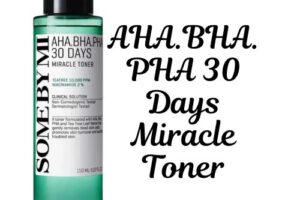How to Store Your Skincare Products
You might think that all skincare products are created equal, but when it comes to storage, that’s far from the truth. From keeping your favorite serum in the fridge to storing it in the bathroom cabinet, how you store your skincare can make all the difference in maintaining its effectiveness. Many people unknowingly jeopardize their products’ potency by leaving them in the wrong places or exposing them to damaging conditions. In this guide, we’ll clear up the confusion and show you the best ways to store your skincare products, ensuring they last longer, work better, and give you the glowing results you deserve.
Avoid Heat and Sunlight
Keeping skincare products away from heat and sunlight is crucial since these elements can break down active ingredients like Vitamin C, benzoyl peroxide, and retinol, reducing their effectiveness. For best results, store them at room temperature in a cabinet or drawer where they’re protected from light. A cool, dark place keeps your products stable and helps them last longer, so you get the full benefit of each application.
Use the Fridge for Certain Products
Storing some skincare items in the fridge can help them stay effective longer. Products like Vitamin C serums, retinol, and benzoyl peroxide treatments may benefit from a cooler environment, which slows down oxidation and keeps the ingredients stable. While most items with preservatives are fine at room temperature, refrigeration also provides a refreshing, cooling effect that can be especially soothing for eye gels and creams designed to reduce puffiness and redness.
Avoid Refrigeration for Oil-Based Products
Storing products like oils and balms in the fridge can cause them to solidify or separate, impacting their texture and ease of use. It’s best to keep these items at room temperature. Similarly, clay-based cleansers and masks don’t do well in cold temperatures, as refrigeration can alter their consistency, making them harder to apply.
Steer Clear of Humid Environments
Humidity from places like bathrooms can encourage mold and contamination, particularly in products that aren’t tightly sealed. To protect your skincare items, keep them in a closed cabinet or drawer away from shower steam. This will help maintain their quality and effectiveness over time.
Properly Seal Containers After Use
Make sure to tightly close all containers after using your skincare products. This simple step prevents contamination and limits exposure to air, which can break down active ingredients and reduce the product’s effectiveness.
Maintain Clean Hands and Tools
It’s easy to get a bit lazy with this step, but it’s essential for keeping your skincare effective and hygienic. Using unclean hands or applicators can introduce bacteria to your products, which may affect your skin over time. Wipe down product pumps regularly to remove any buildup, and avoid adding water directly into containers—even if it seems convenient—as it can dilute the formula and encourage bacteria. Taking these small steps will help keep your products in top shape and make a big difference in your skincare routine.
Follow Expiry Guidelines
It can be tempting to hold on to products for longer than recommended, but using expired skincare can lead to irritation or infection. Most products feature a PAO (Period After Opening) symbol, which tells you how long they’re safe to use once opened (e.g., “12M” means 12 months after opening). A handy tip is to mark the opening date on the packaging so you can keep track. Replacing expired products ensures you’re getting the most out of your skincare routine without risking your skin’s health. Don’t skip this step—it might seem like a small detail, but it’s quite important!
Signs a Product Has Gone Bad
It’s easy to overlook signs that a product has gone bad, but using expired or contaminated skincare can lead to unwanted skin issues. Keep an eye out for any changes in smell, texture, or appearance. If a product starts to smell off, feels different on your skin, or causes irritation when it didn’t before, it’s time to replace it. These subtle changes are red flags that your product may no longer be effective or safe to use, so don’t ignore them! It’s better to err on the side of caution and refresh your skincare stash.














Post Comment